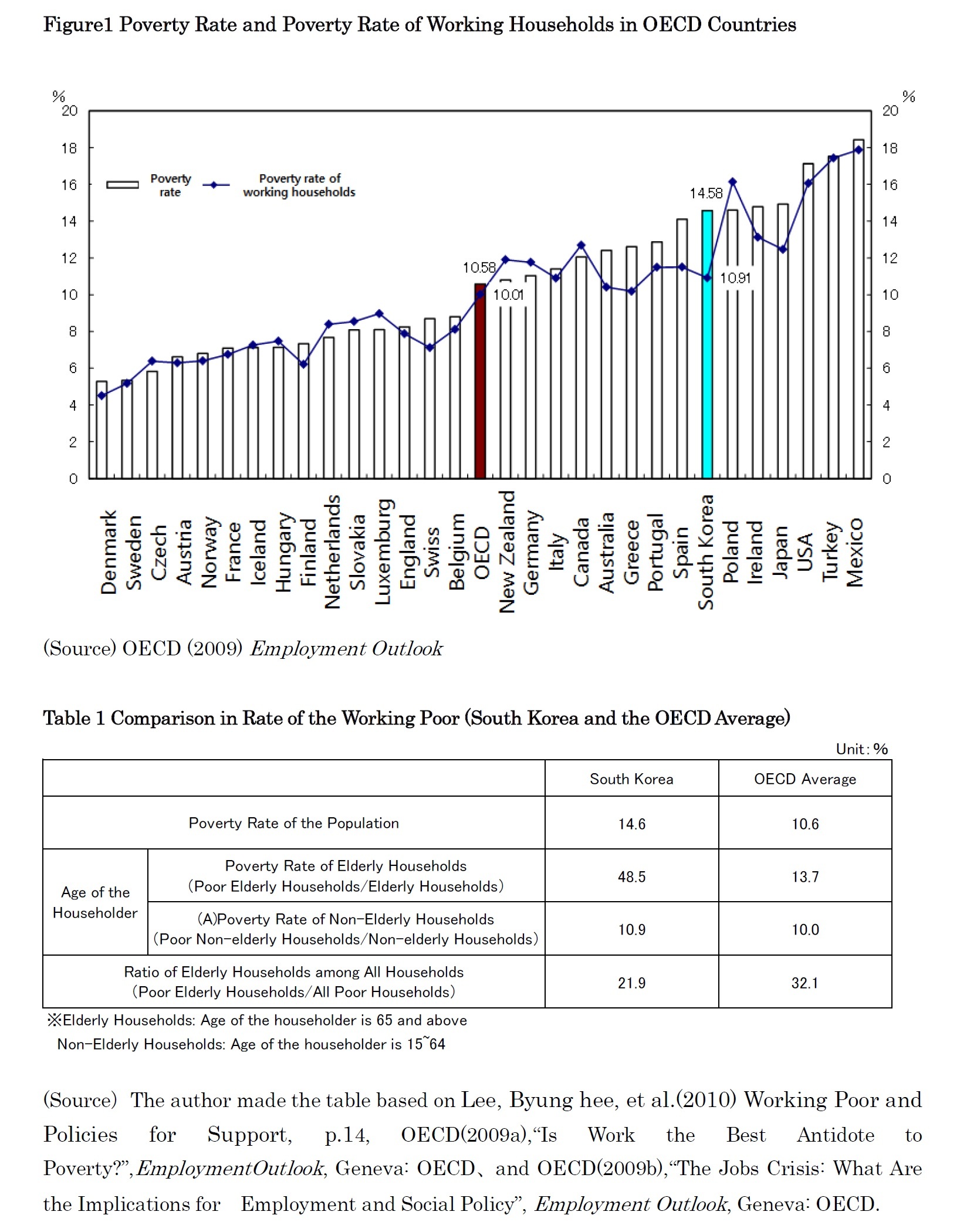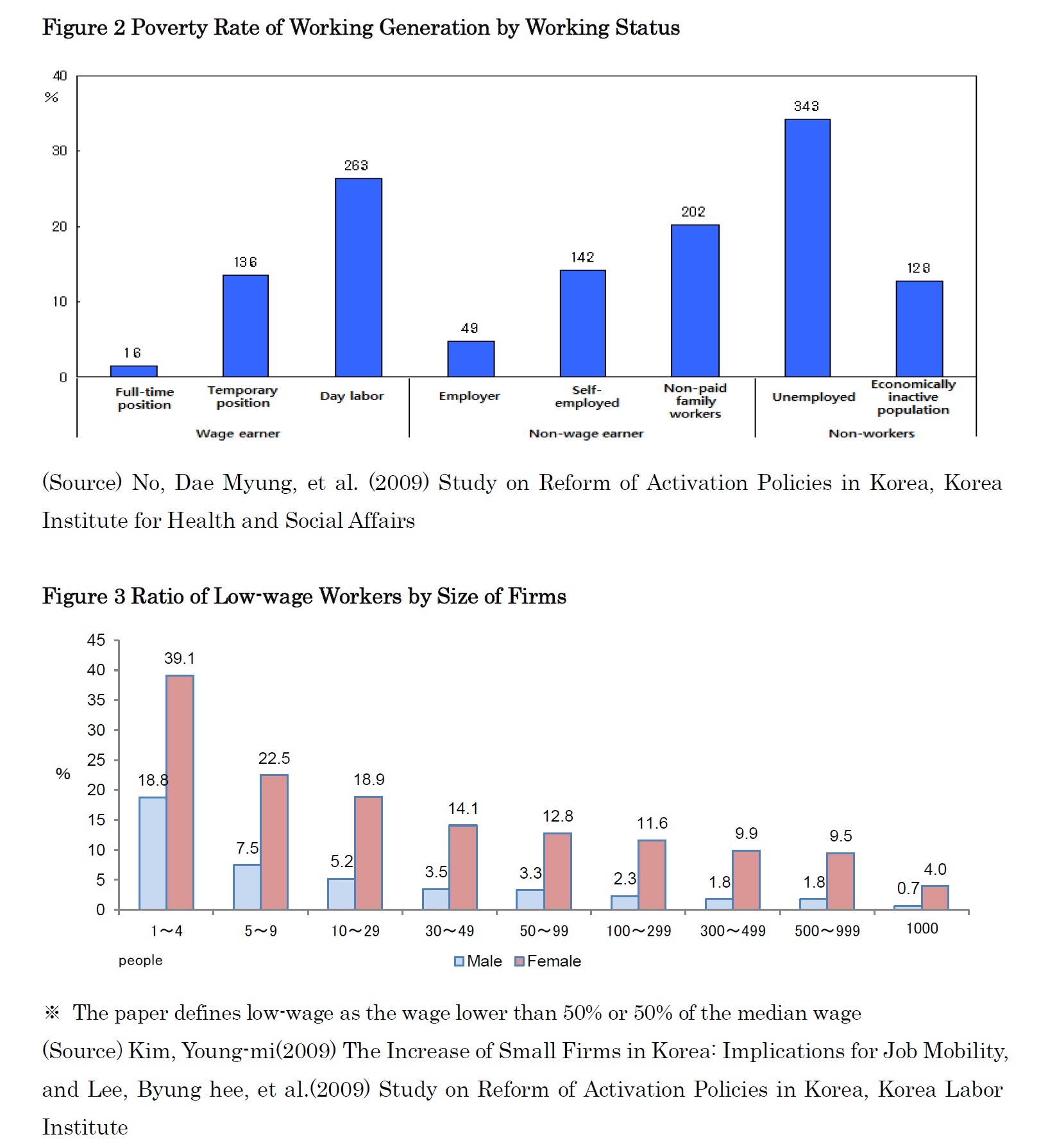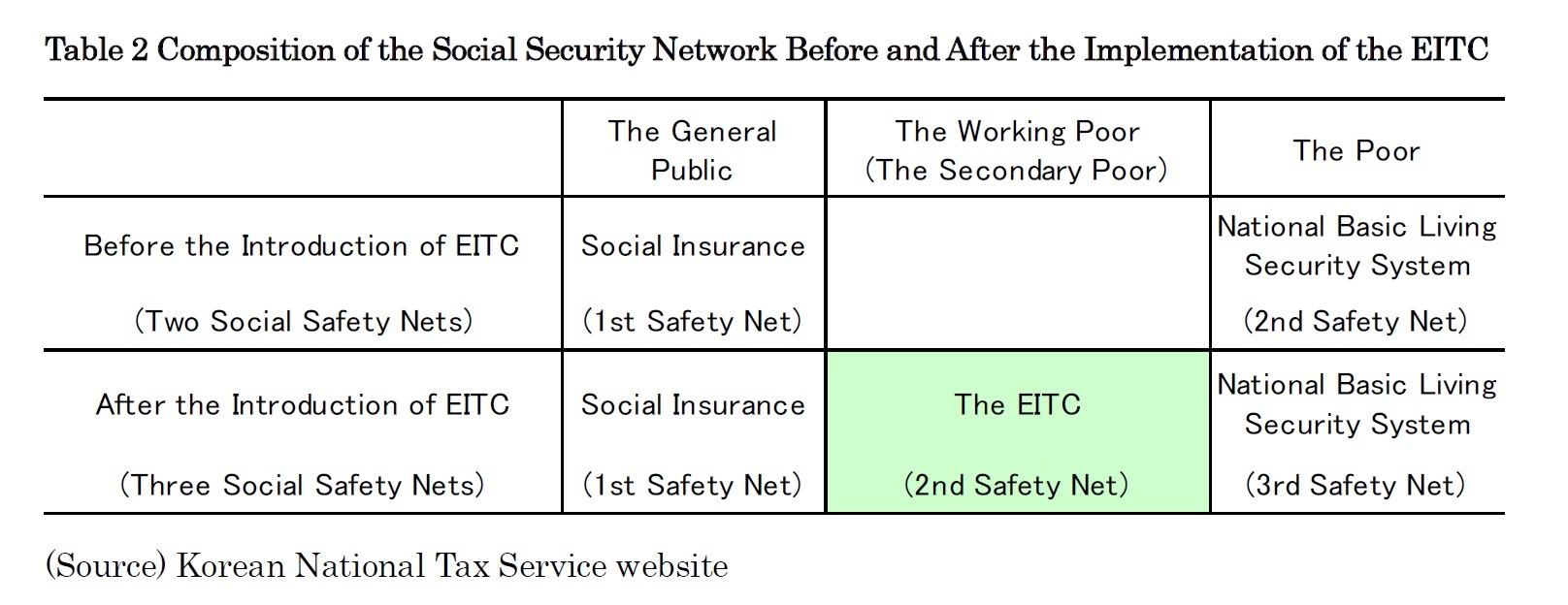- NLI Research Institute >
- Social security system >
- The Current Status of the Earned Income Tax Credit in South Korea and the Implication to Japan―Earned Income Tax Credit or Reduced Tax Rate? ―
The Current Status of the Earned Income Tax Credit in South Korea and the Implication to Japan―Earned Income Tax Credit or Reduced Tax Rate? ―
Social Improvement and Life Design Research Department Research fellow Kim Myoungjung
Font size
- S
- M
- L
- On January 1, 2008, South Korean government introduced an Earned Income Tax Credit (EITC) to boost work incentives of the working poor through supporting income of the tax system and achieving fairness and efficiency of the social system management by establishing new infrastructure.
- ‘Welfare’ is the conventional policy of public assistance, which supports income up to a certain level and is not related to whether the person is working or not; on the other hand, the EITC pursues ‘Workfare’, that provides assistance in order to increase total income as the working poor work.
- After the introduction of the EITC, amendments have been announced and the coverage has been expanded gradually. For example, the standard of household has been changed in the amendment of the year 2011, and families without dependent children (married households) also received benefits. Due to the amendment of the 2012, the elderly households of over 60 without a spouse or a child whom they support have been eligible since 2013. In addition, due to the amendment of 2013, the amount of benefits has increased since 2015 and benefits for children have been established.
- According to the results of studies in the South Korean EITC, some studies show that implementation of the EITC increased the rate of participation in labor market or the labor hours while other studies present decrease in both the rate and the labor hours; results do not necessarily converge. However, there are many study results that the rates of participation in the labor market and labor hours have positive impacts on average. Especially, there are many studies that rated the participation in the labor market increases in phase-in range (the range in which EITC benefits increase as earnings increase); therefore, to some extent, the South Korean EITC has achieved the goal set in the initial phase of the system.
- Not weighted to the reduced tax rate system, Japanese government needs to review and consider the EITC which have shown certain results in the US and South Korea at the same time and implement more effective policies.
1――Introduction1
2――Background and Process of the Introduction of the EITC in South Korea
Process and Overview of South Korean EITC
1|Process and Changes of the EITC
2|Purpose of the EITC
3|Application Process of the EITC and Standard of Application
4|EITC payment system and current situation for payment
5|Extension of Coverage of the EITC and the CTC to the Self-employed
4――Analysis on Effects and Challenges Ahead
5――Implication to Japan
1 This paper supplemented and revised Kim, Myoung-jung (2011) “The Current Situation of the Korean Earned Income Tax Credit (EITC)”, NLI Research Institute, 2011/10/24 with latest contents and information.
1――Introduction
As Japan does not have a similar system, it might be difficult to fully understand the EITC. To explain more specifically, it is an income support for the work system done by supporting one’s real income. Kamakura (2010) explains the EITC as follows. “The EITC is, literally, an integrated system of social security benefits and tax credit. To be specific, income taxpayers are offered tax credit, and those who cannot be exempted or are below the minimum taxable ceiling are provided cash benefits. Source of the idea originates from Freedman’s negative income tax."2
It aims to increase work incentives of the working poor who earn low income or suffer from economic difficulties by providing financial incentives which are calculated on the basis of their earned income. ‘Welfare’ is the conventional policy of public assistance, which supports income up to a certain level and is not related to whether the person is working or not; on the other hand, the EITC pursues ‘Workfare’, that provides assistance in order to increase total income as the working poor work. Therefore, the system can achieve anti-poverty and ease income disparity, and it aims to induce the participation to labor market from the dependence on welfare benefit, by providing financial assistance to the working poor.
2――Background and Process of the Introduction of the EITC in South Korea
Figure 1 illustrates relative poverty rates among OECD countries and relative poverty rates3 among the working households. Relative poverty rate of South Korea in the mid-2000s (14.6%) highly outweighs the OECD average (10.6%).
To understand the current situation of the working poor in South Korea, Byung-hee Lee, et al. (2010) classifies household in two groups, ‘elderly household’ and ‘non-elderly household’ based on OECD data, and compares South Korean data with the OECD average. As a result, ‘poverty rate of elderly household’ is 48.5% and it exceeds the average OECD of 13.7%. The high poverty rate of elderly household in South Korea is attributed to immature public pension system in terms of payments. Meanwhile, poverty rate of the non-elderly household is 10.9%, and there is a relatively small difference with the OECD average of 10.1%. However, ‘elderly household’ accounts for 21.9% of all poor households and the figure is smaller than 32.1% of OECD; labor problem of working households in South Korea seems to be bigger (Table 1).
The high economically active household ratio that consists of the all poor households in South Korea is attributable to relatively low population aging rate, low rate of participation to labor market of young generation based on employment mismatch, high ratio of non-regular workers with relatively low income level among employees, South Korean government’s insufficient countermeasures for social security for economically active households, and so on.
The main reason of poverty among economically active households in South Korea is precarious work. Dae-myung Noh (2009) estimates that about one-third of the unemployed and about a quarter of day laborers are in the poor class (Figure 2).
Young-mi Kim (2009) presents that as the size of an enterprise gets smaller, the years of employment become shorter and the ratio of low income workers gets higher. To be specific, 18.8% of male and 39.1% of female workers in companies of 1~4 workers are low wage employees4 while 0.7% of male and 4.0% of female workers receive low wage in companies with more than 1000 employees (Figure 3).
That is, by implementing the EITC, South Korean social security network has changed from the two-level system which is composed of public social insurance and public assistance (the National Basic Living Security System) public to the three-level system, and income security system gets more cordial (Table 2).
3 According to definition of OECD, the ratio of the people’s equivalent disposable income (disposable income of households divided by square root of the number of households) does not reach half of the entire nation people’s median value.
4 The paper defines low-wage as the wage is lower than 50% of the median wage.
5 An income group that earns income is less than 120% of the minimum cost of living and is excluded from receiving benefits of the National Basic Livelihood Security System, a public assistance system of Korea.
6 It corresponds to Japanese Livelihood Assistance System.
7 Cho, Sun-joo, et al.(2008) “Earned Income Tax Credit and Female Labor Supply: Empirical Analysis and Policy Issues”, p.51, Korean Women’s Development Institute

Social Improvement and Life Design Research Department Research fellow
Kim Myoungjung
Research field
03-3512-1878




















